Mike Kojima posted on December 29, 2008 04:00

Nissan has been hard at work improving the 370Z's chassis stiffness over the 350Z. A stiff chassis means that the suspension will work better under all conditions. A flexy chassis is a huge undamped spring, uncontrolled in its movement. This contributes to a bouncy ride and can cause tire shock and a loss of grip. A flexing chassis also resists attempts at chassis tuning to get the balance between under and oversteer correct. Since Nissan reduced the antidive/antisquat in its suspension geometry, increases had to be made in spring/damping rates to keep body motion under control. How to you prevent the ride from becoming too uncomfortable, especially in a car like the 350Z which already had a pretty stiff ride? The answer was to make the chassis stiffer to make the suspension work.
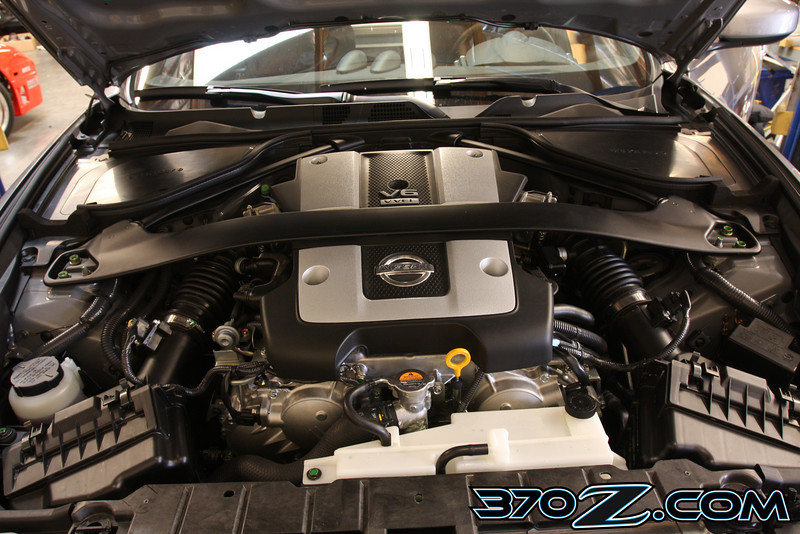 |
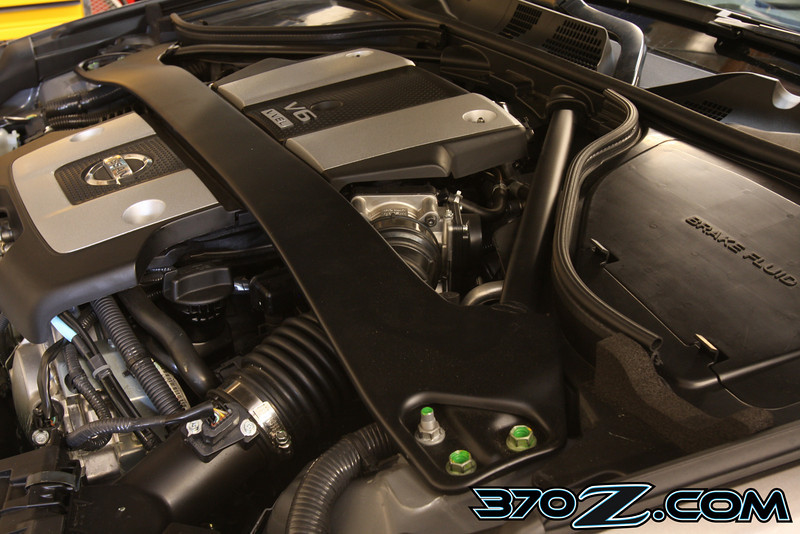 |
| The 370Z's triangulated strut tower brace is pretty and stiff. |
From this angle you can see that the brace is boxed in cross section. |
We noted that the 370 has a stout 3 point front strut tower brace tying the shock towers to the firewall. The aftermarket will be bummed. It will be hard to beat the factory part. In the rear, there is still a factory strut tower bar although the usable trunk space is greatly improved over the 350Z as the bar is moved to be forward of the rear shock towers. Although the bar is covered by a finisher, it is a large one which indicates that something big and stiff lurks underneath.
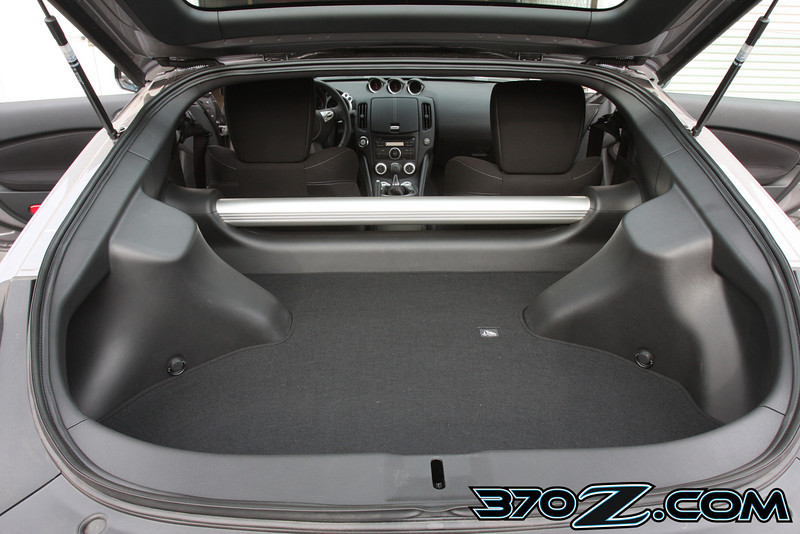 |
| This silver colored finisher hides what we suspect is a huge stiff brace. Look how much rear trunk room the 370 has compared to the 350Z! |
Like the 350Z the 370Z has a large W shaped brace underneath to stiffen the rear of the car by tying the rear one piece steel crossmember into the unibody. There is a difference in this brace though. There are additional tubular members that run from the W brace to the rear of the crossmember by the differential mounts tying the W brace in solidly to the crossmember and the body at many points. This greatly improves the effectiveness of the W brace and really stiffens up the back of the car. We also noted that the lower frame rails are drawn very deeply with a large cross sectional area. By poking our fingers in some of the holes in the rails we think that a thicker gauge of steel is also being used here for additional stiffness. The frame rails are quite a bit deeper and stiffer than those found in the 350Z.
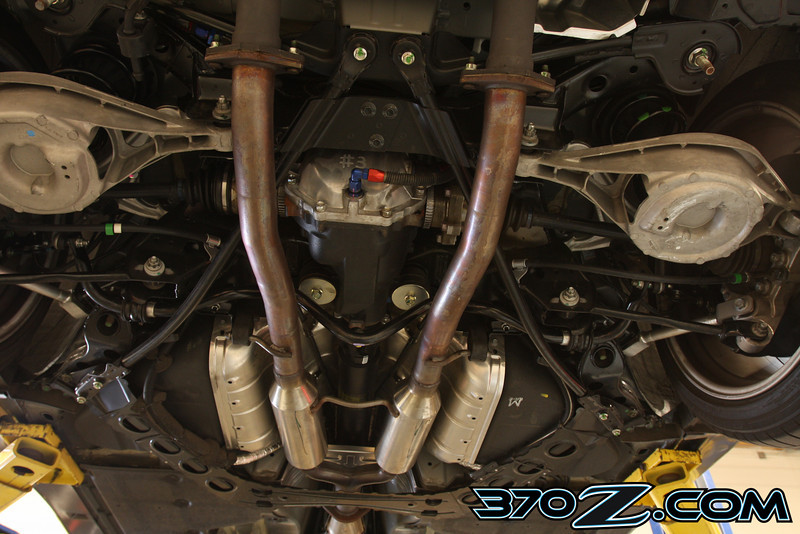 |
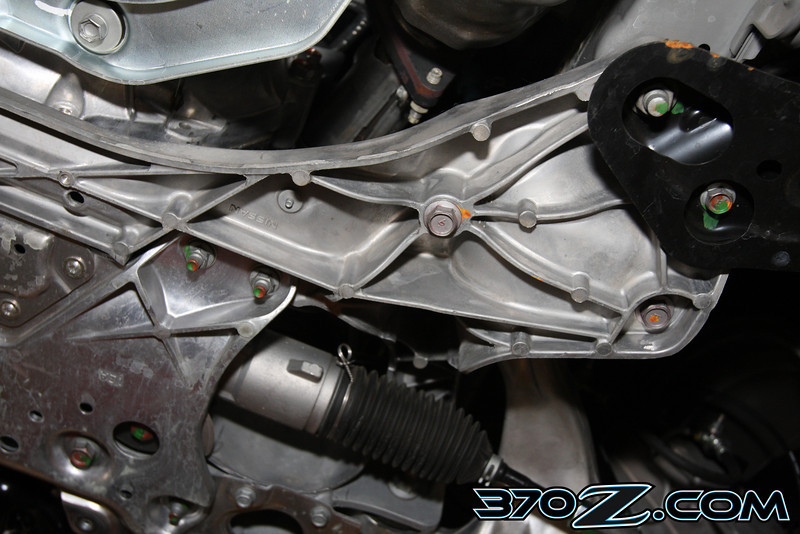 |
| Like the 350Z, the 370Z has the underbody W brace. In addition the 370Z has tubular reinforcements that run from the W brace to just behind the differential tying the chassis to the rear subframe in many points for maximum effectiveness. |
The 370Z's frame rails are bigger and taller with thicker metal for much greater stiffness. The plastic cover to the right of the rail improves underbody aerodynamics.
|